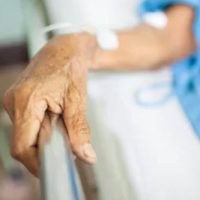Bedsores and Nursing Home Negligence

Pressure ulcers, one of the most common nursing home injuries, develop unless a resident turns over in bed at least once every two hours. Bedsores most often develop on skin that covers bony areas of the body, such as the heels, ankles, hips and tailbone. Cellulitis and cancer are two of the most common bedsore complications. Cellulitis is an infection of the skin and connected soft tissues. It causes warmth, inflammation and swelling of the affected area. Significantly, people with nerve damage often do not feel pain in the area affected by cellulitis. Unhealed, open wounds often become cancerous.
Even without such complications, pressure ulcers are often life threatening, especially if the victim has a pre-existing condition. Most people are in nursing homes because they have pre-existing health conditions. So, a Seattle personal injury lawyer can usually obtain substantial compensation for these victims. This compensation usually includes money for economic losses, such as medical bills, and noneconomic losses, such as pain and suffering.
Causes
In one way or another, nursing home understaffing, a problem that affects about 90 percent of area nursing homes, usually causes serious bedsore injuries.
Many nursing homes are seriously short staffed, especially during low census periods, like nights and weekends. In these situations, staff members often don’t perform regular rounds. Instead, they only respond to emergencies or only occasionally check on residents.
Many nursing home residents are so physically frail and/or taking so much medication that they cannot turn themselves over in bed. So, they depend entirely on the nursing home staff. Much too often, the nursing home staff lets them down.
On a related note, understaffed facilities often hire underqualified workers. For example, a patient care technician might do a licensed vocational nurse’s job. Patient care techs often cannot spot early stage bedsores, particularly in the dark. As a result, the wound festers and becomes much worse very quickly.
We mentioned pre-existing conditions above. Frequently, the nursing home is responsible for such conditions. Malnutrition is a good example. Our senses, including smell and taste, degrade with age. Therefore, to many older people, food no longer smells or tastes good. So, they don’t eat. The malnutrition significantly increases physical frailty and the likelihood of developing a serious pressure ulcer.
Solutions
A Seattle personal injury attorney has several legal options in bedsore cases. All of them hold the nursing home owner responsible for damages. Third party liability is very important in these situations. Most individuals are effectively judgment proof, and most nursing home owners have deep pockets.
The respondeat superior theory usually applies in these cases. Employers are financially responsible for negligence damages, such as bedsore damages, if:
- The negligent party was an employee
- Who was working within the course and scope of employment at the time.
Washington law defines all these terms in broad, victim-friendly ways. For example, most workers are employees for negligence purposes, even if they’re independent contractors for other purposes.
Other possible theories include negligent hiring and negligent supervision. Negligent hiring is asking an incompetent worker to perform a job, as outlined above. Negligent supervision is a failure to properly watch and/or discipline employees.
Count on a Savvy King County Lawyer
Elderly people at nursing homes deserve special protection. For a free consultation with an experienced personal injury lawyer in Seattle, contact the Emerald Law Group. We do not charge upfront legal fees in these matters.
Source:
hopkinsmedicine.org/health/conditions-and-diseases/bedsores
